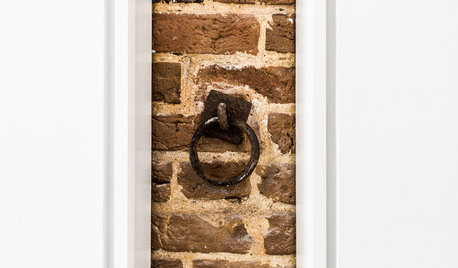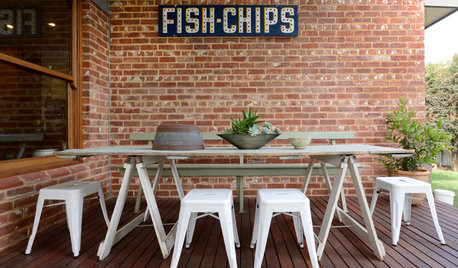Is it possible to 'dig' them out this way?
linnea56 (zone 5b Chicago)
15 years ago
Related Stories

LIFEYou Said It: ‘Rather Than Remove Them, They Framed Them’
Design advice, inspiration and observations that struck a chord this week
Full Story
MOVING5 Risks in Buying a Short-Sale Home — and How to Handle Them
Don’t let the lure of a great deal blind you to the hidden costs and issues in snagging a short-sale property
Full Story
FUN HOUZZWe Can Dream: Hobbit Houses to Rule Them All
Escape the real world and explore your Middle-earth fantasies
Full Story
REMODELING GUIDESHow to Dig Down for Extra Living Space
No room for a ground-level addition? See if a finished basement is a good idea for you
Full Story
GARDENING GUIDESGarden Myths to Debunk as You Dig This Fall and Rest Over Winter
Termites hate wood mulch, don’t amend soil for trees, avoid gravel in planters — and more nuggets of garden wisdom
Full Story
ECLECTIC HOMESHouzz Tour: A New Look for Former Student Digs
An ill-treated Victorian in England becomes a more open, extended and aesthetically appealing family home
Full Story
STORAGE10 Ways to Get More Storage Out of Your Space
Just when you think you can’t possibly fit all your stuff, these storage ideas come to the rescue
Full Story
GARDENING AND LANDSCAPINGBudget Decorator: 10 Ways to Deck Out Your Patio
Hang a vintage sign here and some inexpensive curtains there, for a patio or deck that looks polished and pulled together
Full Story
MORE ROOMS12 Ways to Get More Out of Your Closet This Year
First clear it out, then fill it up again using some of these organizing tricks for your walk-in closet
Full Story
VINTAGE STYLELet's Bang Out New Ways With Vintage Typewriters
We know, we've seen them everywhere, too. But these ideas turn a new page on vintage typewriter decor
Full Story





kayman
duluthinbloomz4
Related Professionals
Canton Landscape Architects & Landscape Designers · Holly Springs Landscape Architects & Landscape Designers · Garden City Landscape Architects & Landscape Designers · Glassmanor Landscape Architects & Landscape Designers · Manhattan Beach Landscape Architects & Landscape Designers · Bristol Landscape Contractors · Framingham Landscape Contractors · Red Oak Landscape Contractors · Rochester Landscape Contractors · Woodland Landscape Contractors · Dayton Decks, Patios & Outdoor Enclosures · Framingham Decks, Patios & Outdoor Enclosures · Lansdale Decks, Patios & Outdoor Enclosures · Pittsburgh Decks, Patios & Outdoor Enclosures · Pueblo West Decks, Patios & Outdoor Enclosureselfsbeard
opheliathornvt zone 5
ofionnachta
philomena
cheerpeople
linnea56 (zone 5b Chicago)Original Author
gardenfanatic2003
linnea56 (zone 5b Chicago)Original Author
gardenfanatic2003